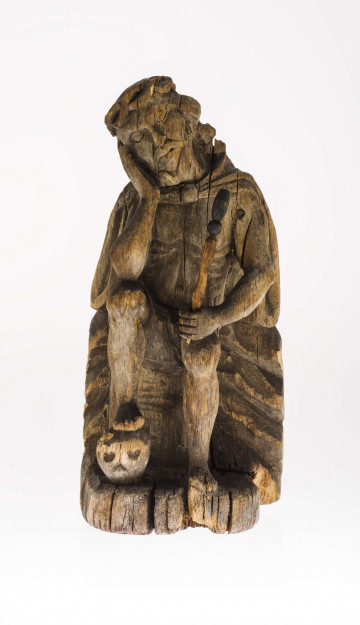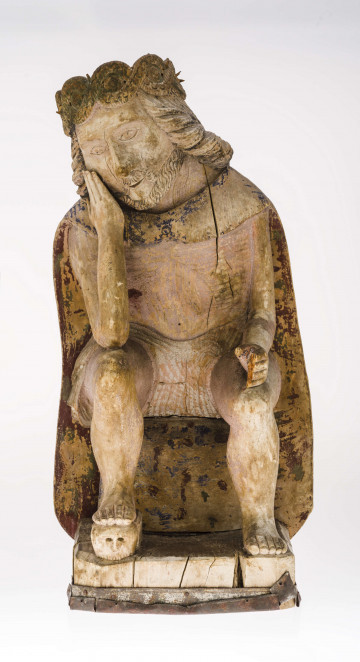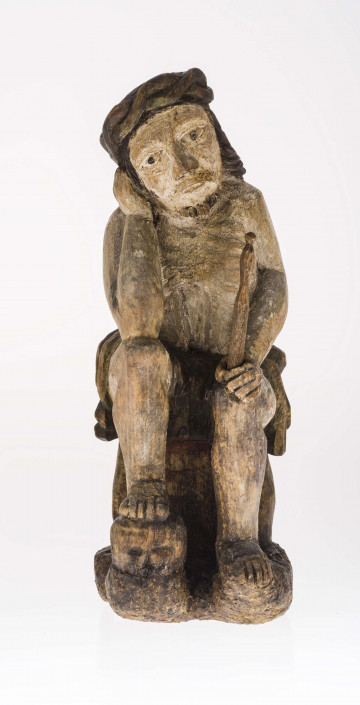
Pensive Christ
1801 — 1850
National Museum in Lublin
Part of the collection: Folk Art of the Lublin Region (17th–1st half of the 20th c.)
The image of the Sorrowful Christ held a privileged position in popular culture. This metaphorical summary of Christ's Passion is informally regarded as a symbol of old Polish folk art. Albrecht Dürer's woodcut from the title page of the Little Passion is considered its prototype in devotional art. The image strongly merged with folk religiosity since it embodied God understanding all human misery, who will not leave people without care and hope. The sculptors drew inspiration for their figures from Gothic or Baroque sculptures found in churches (see E/7372/ML).
The sculpture comes from a cemetery tomb chapel hollowed in a trunk. It has formal features of the South-Volubel group (from the area of Biłgoraj, Janów Lubelski and Hrubieszów; see: E/357/ML). However, the artist combined various iconographic motifs: Christ, in a Gothic rendition wearing a hip-band (perizonium) and a crown of thorns, is additionally depicted with a royal sceptre (characteristic of the Baroque period) in the form of a reed, a symbol of torment. His expressive face expresses sadness, pain and torment, and the bloodshot tears flowing from his eyes give his face a tragic expression. Additionally, the schematic marking of Adam's skull, on the very base between the figure's feet, draws attention. Probably its meaning for the sculptor was not clear, and he was only modelled on other examples of Christ's representation.
Author / creator
Dimensions
cały obiekt: height: 53,5 cm
Object type
sculpture
Technique
sculpture
Material
wood
Creation time / dating
Creation / finding place
Owner
The National Museum in Lublin
Identification number
Location / status

1801 — 1850
National Museum in Lublin

1862
National Museum in Lublin

1801 — 1900
National Museum in Lublin
DISCOVER this TOPIC
National Museum in Szczecin
DISCOVER this PATH
Educational path